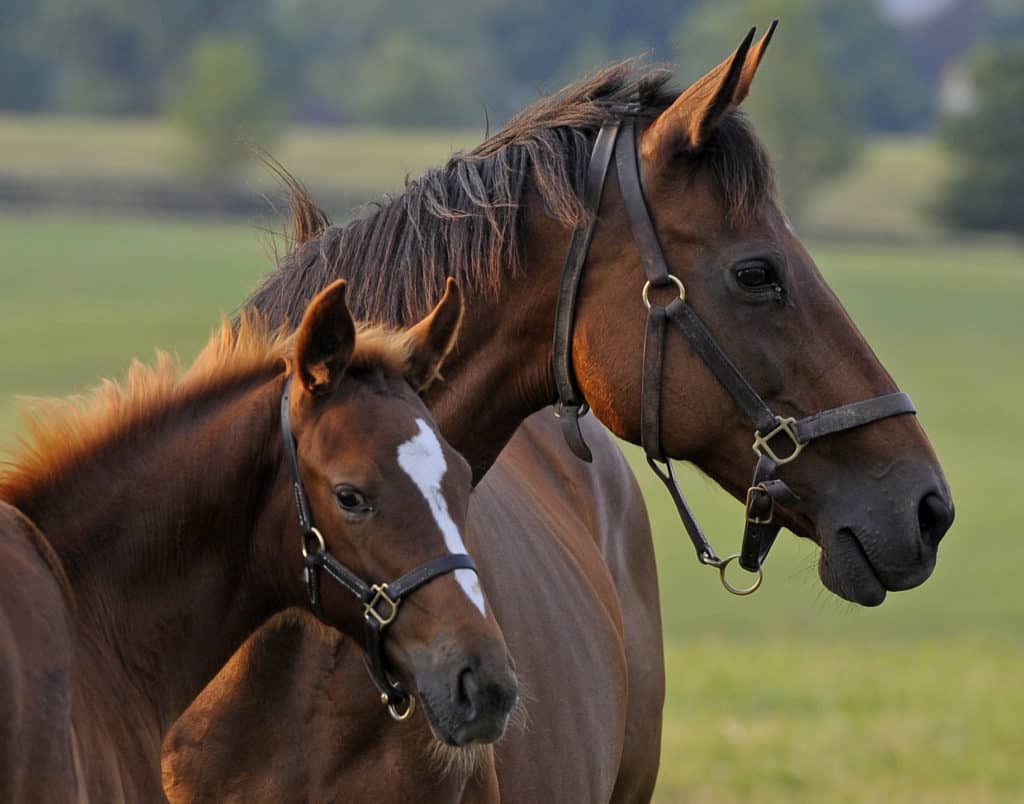Foal ‘Stealing’
Our pregnant mare thinks another mare’s colt is hers. Is it common for pregnant mares to adopt others’ foals?
Horse breeding from planning through foal care
Our pregnant mare thinks another mare’s colt is hers. Is it common for pregnant mares to adopt others’ foals?
More than 300 equine reproduction specialists from 31 countries convened recently at the University of Kentucky for the 10th International Symposium on Equine Reproduction (ISER).

Lawsonia intracellularis bacteria can cause intestinal disease in horses, pigs, and other species worldwide. The syndrome in horses is often called equine proliferative enteropathy, or EPE.

Weaning can be quite stressful for foals, mares, and their owners.
General considerations for good stallion management are maintenance of the stallion in excellent health and a stress-free environment that promotes normal sexual behavior and sperm production.

Equine arteritis virus (EVA) and equine herpesvirus-1 (EHV-1) are the two main topics of research for Udeni Balasuriya, BVSc, MS, PhD, associate professor of virology at the Gluck Equine Research Center.

Deworming is an essential part of managing your horse’s overall health. This free fact sheet is a general guide to deworming your horse, including common parasites, dewormer options, parasite control via manure management, proper scheduling and more.

Vaccinating horses is generally considered to be the most cost-effective method of preventing infectious diseases; however, vaccines do have limitations.

Cloning is defined as the process of creating a genetically identical copy of another cell or organism (i.e., bacteria, plant or animal) through non-sexual means.
Our current understanding of the epidemiology, pathology, bacteriology, immunology, toxicology, and clinical aspects of MRLS has come through scientific research conducted over the last nine years.
Early this year, frozen embryos that had undergone genetic testing were thawed and successfully transferred into the uteri of surrogate mares at Minitube International Center for Biotechnology in Mount Horeb, Wis.
The benefit of genetic testing of embryos is the ability to detect genetic diseases and traits prior to establishing a pregnancy. There are numerous diseases for which
Horses with allergic diseases, like recurrent airway obstruction, might have fewer parasites.
Koko the horse appeared to be a typical mare, but when she began acting overly aggressive and trying to mount her female counterparts, her owner became suspicious.
After a barrage of tests at the University of Guelph’s Ontario Ve
A stallion in Wisconsin has become positive stallion No. 23 in an ongoing investigation into contagious equine metritis (CEM).
Wisconsin State Veterinarian Robert Ehlenfeldt, DVM, said this horse is considered part of the outbreak th
An orphaned Thoroughbred foal named Jerry who was fostered by a rescued mare at World Horse Welfare has been reunited with his grateful owner.
When Jerry lost his own mother last August, his worried owner contacted the National Foali
Stay on top of the most recent Horse Health news with
"*" indicates required fields